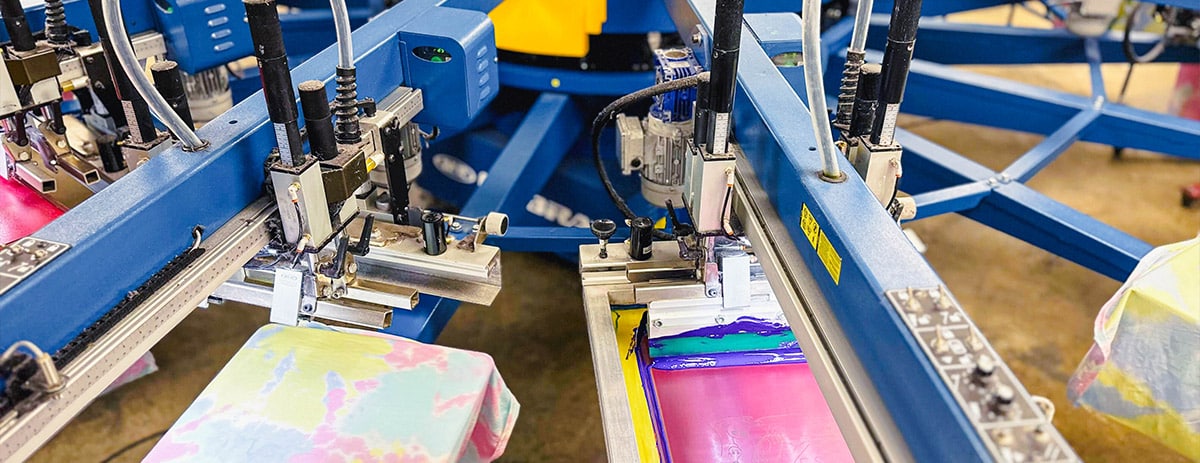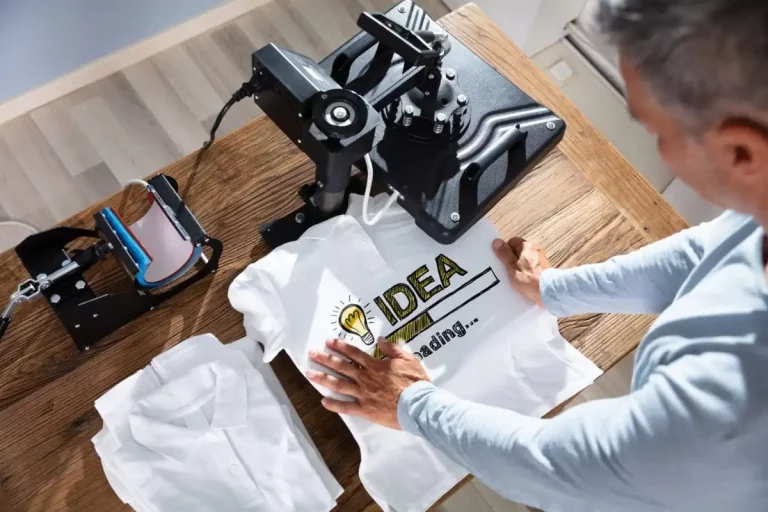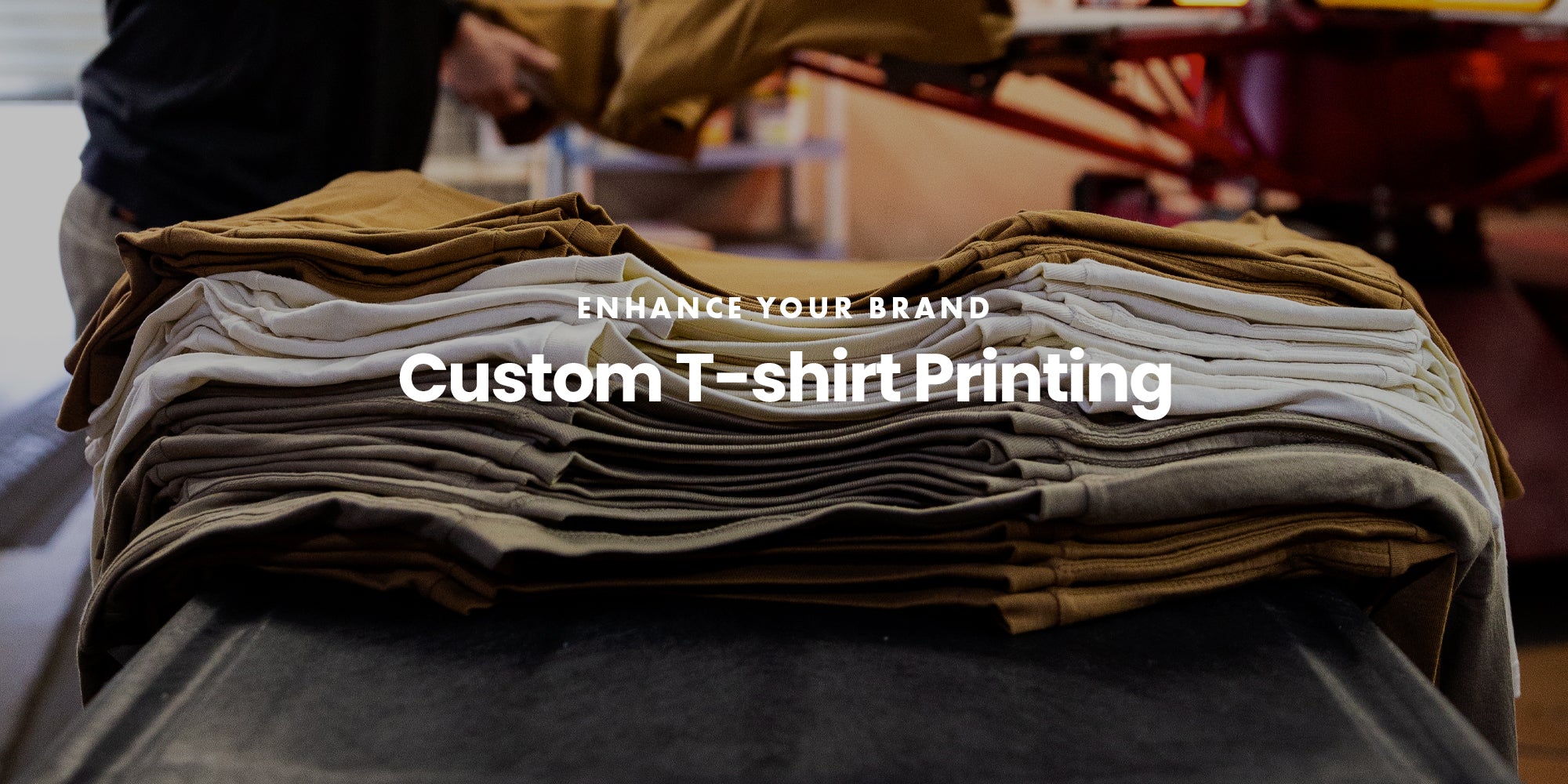Affordable Screen Printing Kit for Home Use
Affordable Screen Printing Kit for Home Use
Blog Article
Display Printing Uncovered: Whatever You Need to Know About Tee and Garment Printing Techniques
Display printing is an interesting technique that integrates art with strategy, offering limitless opportunities for creative thinking. Ready to check out the necessary elements that make screen printing an art type?
The Essentials of Screen Printing: Exactly How It Works
When you plunge right into screen printing, you'll find it's both a science and an art. At its core, screen printing involves producing a stencil, or screen, that permits ink to pass via only in particular locations (screen printing kit). You start by picking your design and preparing your display with a light-sensitive emulsion. Once you reveal this emulsion to light, it hardens, leaving your layout as a negative space.
Setting the display over the textile, then make use of a squeegee to push ink with the display onto the garment. Each step is necessary, and mastering them will elevate your screen printing abilities, changing simple garments into one-of-a-kind, meaningful items.
Kinds Of Screen Printing Strategies
Once you realize the basics of screen printing, it's time to discover the numerous techniques that can elevate your designs. One popular method is standard display printing, where ink is pressed through a stenciled screen. This method is terrific for vibrant, lively shades. There's water-based ink printing, which offers a softer feeling and is environmentally friendly, but it needs a different approach to treating.
If you're going for fine details, take into consideration discharge printing. This strategy eliminates color from the fabric, leaving a soft, vintage look. An additional alternative is plastisol printing, understood for its durability and dazzling shades, making it a favorite for many brands. Ultimately, trying out halftone printing to produce gradient effects and intricate designs. Each method has its one-of-a-kind appeal, so do not hesitate to attempt them bent on discover what matches your style best!
Necessary Devices for Screen Printing
To achieve sensational results in screen printing, having the appropriate devices is basic. You'll require a durable screen printing framework, which holds the mesh that moves your design onto the garment. Next, spend in premium squeegees; these are important for using ink equally across the screen.
Choosing the Right Inks and Materials
When choosing inks and materials for display printing, you require to think about the sort of ink that works ideal for your job. Consider material compatibility to assure your designs look last and great lengthy. Discover environment-friendly ink options to make your printing process extra sustainable.
Sorts Of Screen Inks
Choosing the ideal screen ink is crucial for achieving vibrant, resilient prints that fulfill your task's requirements. There are a number of sorts of display inks to check out. Plastisol ink is prominent for its versatility and simplicity of use, offering exceptional color opacity on dark materials. Water-based ink, on the other hand, supplies a softer feeling and is environmentally friendly, making it suitable for those looking to reduce their environmental impact. Discharge inks eliminate color from the textile, resulting in a soft, vintage look however need details handling. Specialized inks, such as glow-in-the-dark or metallic, can include one-of-a-kind impacts to your styles. Assess your task needs and choose the ink that straightens best with your preferred outcome.

Material Compatibility Factors To Consider
Recognizing textile compatibility is essential for accomplishing premium screen prints, particularly given that various materials react uniquely to numerous inks. When picking inks, think about the fabric type-- cotton, polyester, or blends. For cotton, water-based inks function well, providing gentleness and breathability. Polyester, on the other hand, typically needs plastisol inks for better attachment and vivid shades. You may need to use a combination of both kinds if you're publishing on blends. Always examine your inks on sample material to guarantee they stick properly and preserve shade integrity. Furthermore, maintain in mind that material weight and structure can impact the last outcome, so picking the right ink and material combo is crucial for your job's success.
Eco-Friendly Ink Options
Environment-friendly inks are ending up being a preferred selection for screen printers who desire to decrease their ecological influence while keeping quality. When picking inks, think about water-based inks, which are much less harmful and easier to cleanse up compared to traditional solvents.
Furthermore, seek inks made from renewable energies, such as soy or vegetable-based options. By picking the appropriate inks and materials, you'll not just create magnificent designs however likewise contribute to a more sustainable printing procedure. Make the switch, and your prints will certainly show your commitment to the environment!
Preparing Your Style for Display Printing

Submit Format Demands
To ensure your design looks dynamic and sharp on textile, you'll require to pay close focus to file layout needs for screen printing. Make sure your design has a transparent history to protect against unwanted white sides on your prints. Maintain shade modes in mind; CMYK is basic for display printing, so convert your RGB develops as necessary.
Shade Splitting Up Techniques
Shade splitting up is a crucial action in preparing your style for screen printing, and grasping it can considerably improve your print top quality. You'll require to break your style into individual shades, as each color needs a different screen during printing. This accuracy not only guarantees precise color representation but additionally improves the printing procedure.
Resolution and Dimension
Attaining the finest cause display printing starts with assuring your style has the ideal resolution and dimension. Ideally, your art work should be at least 300 DPI (dots per inch) for sharp, clear prints. Your last item might look amateur and pixelated. if you utilize reduced resolution.
When it pertains to size, consider the measurements of your print area. Design your artwork to match the final print dimension, preferably creating it in the real dimensions you'll be printing. This means, you'll stay clear of any kind of unexpected scaling problems.
Always inspect your design in both vector and raster layouts. Vector graphics can be scaled without losing high quality, making them optimal for screen printing. Preparing appropriately will ensure your style looks fantastic on every garment!
Step-by-Step Display Printing Refine
Display printing is a vibrant process that permits you to check it out develop dynamic layouts on different surfaces. To obtain started, you'll require a screen, emulsion, and your selected ink.
After washing out the unexposed solution, your screen is ready. Set it up on your printing surface and align your garment beneath it. Put ink onto the display and utilize a squeegee to press the ink through the pattern onto the textile. Lift the screen carefully and let the print dry. Ultimately, treat the ink using heat to ensure durability. That's it! You've effectively display printed your design.
Tips for Effective Screen Printing Projects
While you're diving into your display printing projects, bear in mind that preparation is crucial to success. Beginning by gathering all your products-- inks, garments, mops, and screens. A clean work space helps avoid undesirable errors, so clean up prior to you start.
Following, validate your artwork is high-resolution and appropriately sized for your garment. Test your display for appropriate exposure and tidy it completely to stay clear of spots. When mixing your inks, comply with the supplier's standards to attain the appropriate consistency.
Throughout printing, apply also pressure with your squeegee for constant outcomes. Do not hurry; take your time to validate each print meets your requirements. After printing, let your garments completely dry totally prior to handling or packaging them.
Lastly, constantly maintain a sample of your job for future recommendation. This way, you can assess your progress and enhance your methods with time. Satisfied printing!

Often Asked Questions
The length of time Does It Require To Establish up a Display Printing Task?
Establishing a display printing work usually takes about thirty minutes to an hour. You'll prepare the displays, mix inks, and readjust the press. The time differs based upon intricacy and experience, so stay organized!
Can I Publish on Various Material Types Making Use Of the Very Same Strategy?
Yes, you can print on different fabric kinds using the very same strategy, but you'll need to change your inks and settings. Some materials absorb ink differently, so experimenting guarantees the best results for each and every product.
What Are Usual Mistakes to Prevent in Display Printing?
When screen printing, stay clear of typical blunders like using the wrong ink, neglecting correct direct exposure times, or avoiding pre-press checks. Constantly check your setup and maintain clean screens to assure quality outcomes each time.
Exactly How Can I Effectively Tidy and Keep My Display Printing Devices?
To appropriately tidy and preserve your screen printing tools, you wikipedia reference ought to on a regular basis wash displays with suitable solvents, inspect squeegees for wear, and guarantee all devices are kept dry and dust-free. Visit Your URL Uniformity improves and avoids pricey fixings efficiency.
Is Screen Printing Ecologically Friendly Contrasted to Other Methods?
Display printing can be more eco-friendly than other methods, specifically if you utilize water-based inks and eco-conscious products. By picking sustainable supplies and techniques, you lower waste and decrease your influence on the earth.
Screen Printing Uncovered: Every Little Thing You Required to Know Concerning T-Shirt and Garment Printing Techniques
At its core, screen printing involves creating a pattern, or display, that allows ink to pass through just in specific areas. Placement the display over the fabric, then utilize a squeegee to push ink via the screen onto the garment. One prominent approach is typical screen printing, where ink is pushed through a stenciled display.When picking inks and materials for display printing, you require to take into account the type of ink that functions finest for your task.
Report this page